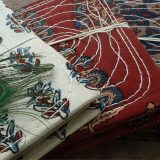A craft for another
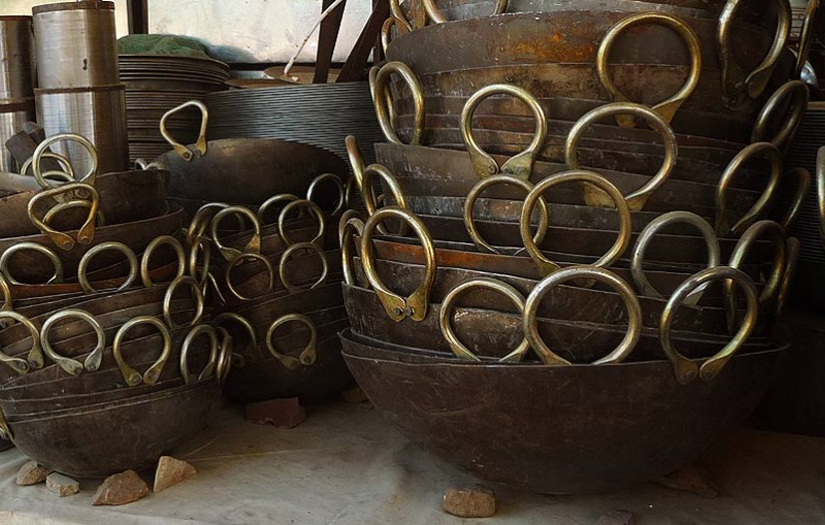
The stages of evolution of mankind, from the Neolithic age to Iron age and then to the Industrialized age, all have their names based on the tools that have been used by humans in that period.
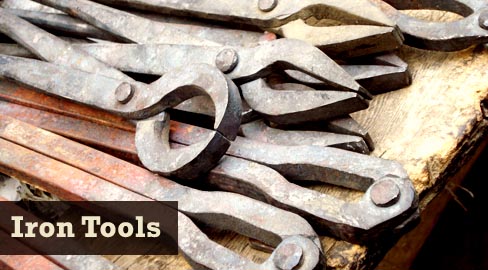
The history of mankind is closely related to the development of tools and how they changed the quality of life of humans in every way, from growth in farming with tools like the plough, sickle, pickaxe etc or increase in complexity of trade work with craftsman tools like drill, saw, chisel, planar, hammer etc.
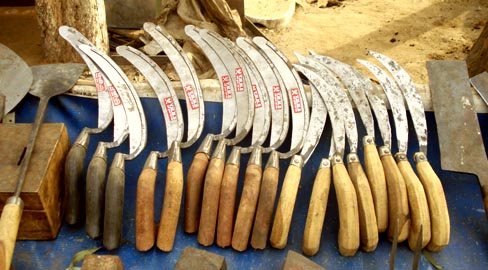
Iron tool by Lohar community
Ever wondered who is it that makes the tools; who has been influential in the course of the history of industrialization? There are some people who make things, and then there are those who make the tools that make them. We just have to keep our eyes open.
In the northern states of India, a nomadic community of blacksmiths moves from one place to another on bullock carts (“Gadi” in Hindi), making and selling iron tools and wares outside their makeshift homes along roads and highways. The Gadiya Lohar (also, Gaduliya Lohar) community, originally from Rajasthan, now lives and moves in Haryana and parts of Uttar Pradesh and Madhya Pradesh.
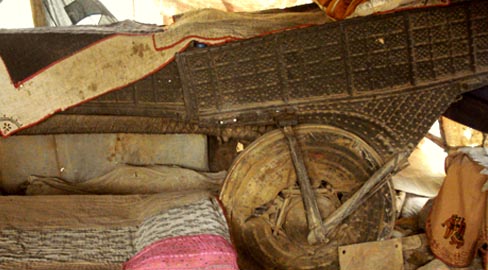
According to legend, the Gadiya Lohars were weapon makers for the Rajput princes in the 16th Century. But when Chittorgarh fell into the hands of Mughals, the Gadiya Lohars pledged never to return to their homeland till their king, Maharana Pratap returned to the throne. Things had changed in the society by the time peace was restored and they could not regain their lost status. To avoid hostility from city dwelling blacksmiths, they decided to leave and started going to places hundreds of kilometers away from their home. They have been nomads since, moving from place to place, sometimes putting shelter around their beautifully decorated carts, making tools and implements for farmers, builders, masons and other craftsmen.
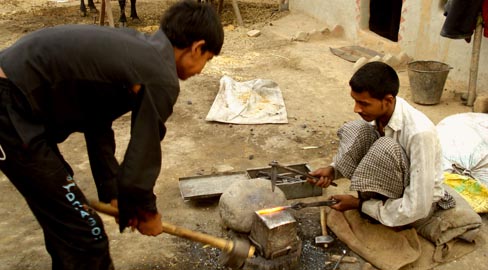
The Gadiya Lohars buy their raw material, iron, from local junk shops, make mud hearths and use coal or cow dung cakes as fuel for heating. Iron is heated on the hearth and beaten into the desired shape with vice and hammer. Two craftsmen are required for the process, one to hold the hot iron with tongs, called “chutki”, and another, to hammer it.
If a piece needs to have a sharp edge or point, the area to be sharpened is heated till it is red hot and then beaten with the hammer. This results in accumulation of iron in a smaller area, thereby making the sharp tip stronger as compared to a similar product mass produced in large scale industries, where sharpness of the metal is achieved by removing away material.
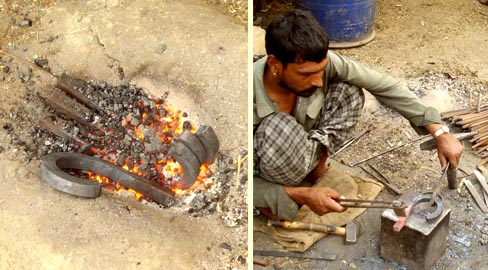
The craftsmen make holes in iron using “sumbi” or a bore and even make grooves with the help of hexagonal bolts. Finishing of the product involves filing to smooth the surface and sometimes attaching wooden or iron handles with rivets.
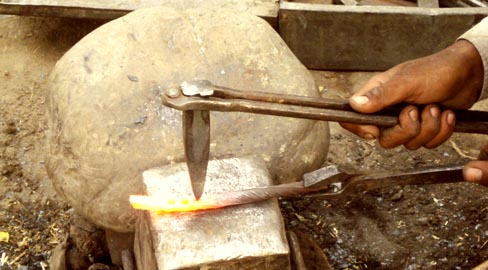
From swords, spears and daggers, to ploughs, axes and saws and even utensils like kadai and spatula, the innovative Gadiya Lohars learnt to adapt to the local demand and use their skill to make a living off their craft. True to their identity of Lohars, the expert blacksmiths even make their own tools.
Owing to their nomadic lives, their children sometimes miss out on regular education and are therefore trained for the profession within the family. They work in the cool hours of morning and evening to avoid the heat of passerby traffic, melting tyres against the scorching road adding to the sizzling blast of hot coal and iron.
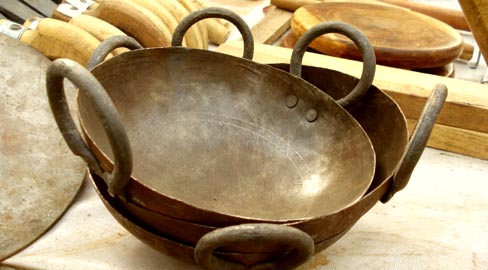
The art of making tools is a tough combination of hard labour and accuracy, an art the Gadiya Lohars have mastered since their days of weaponry. Interestingly, the Gadiya Lohars never work with iron or buy iron on Saturdays, lest they face the wrath of the god “Shani”, but they do not object to selling the wares on Saturday. Such are the ironical yet fascinating beliefs and customs of communities, which give the individuals a sense of continuity through generations exposed to the ravages of modernization and change.
Coexisting with their slick industrial rivals, dodging thick skinned lawmakers, the Gadiya Lohars live up to their ancestral profession as they hold tight their identity and traditions with pride.
~ By Abhijita Pandey

